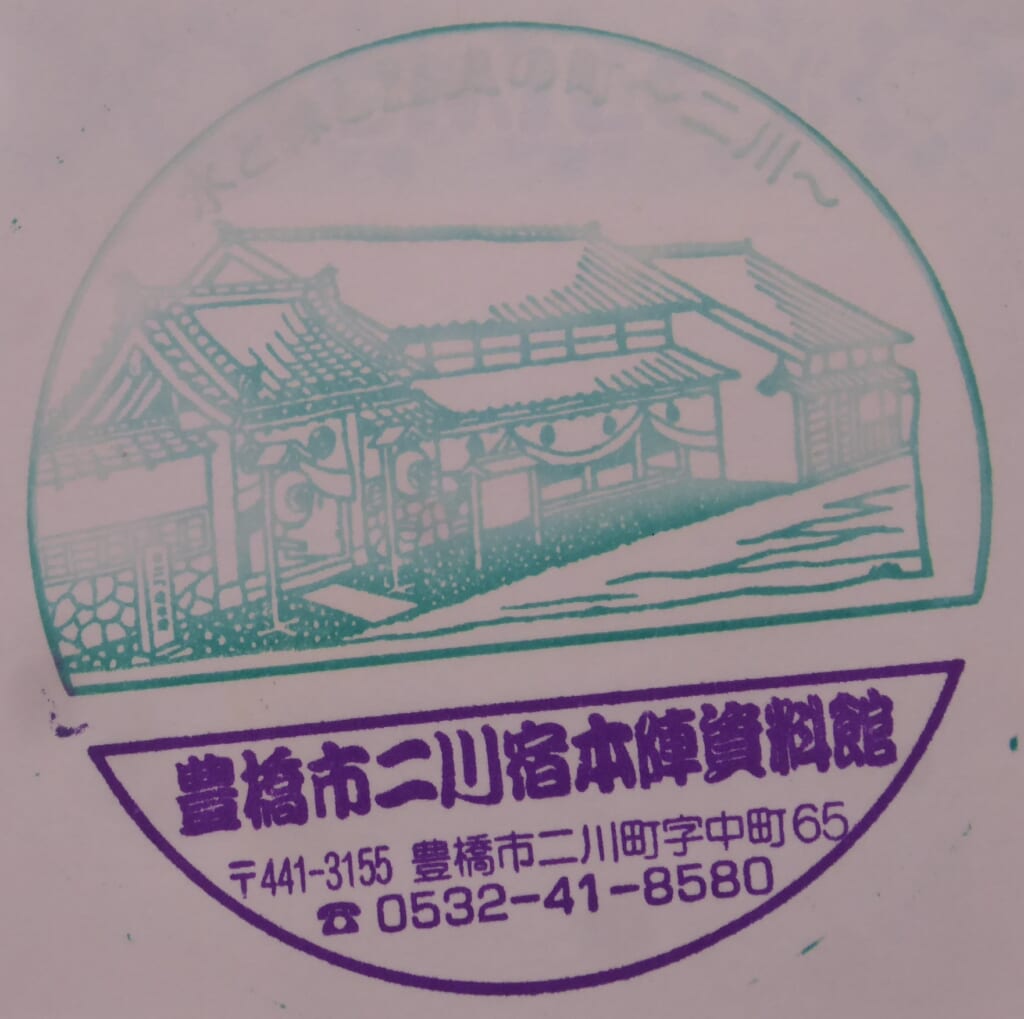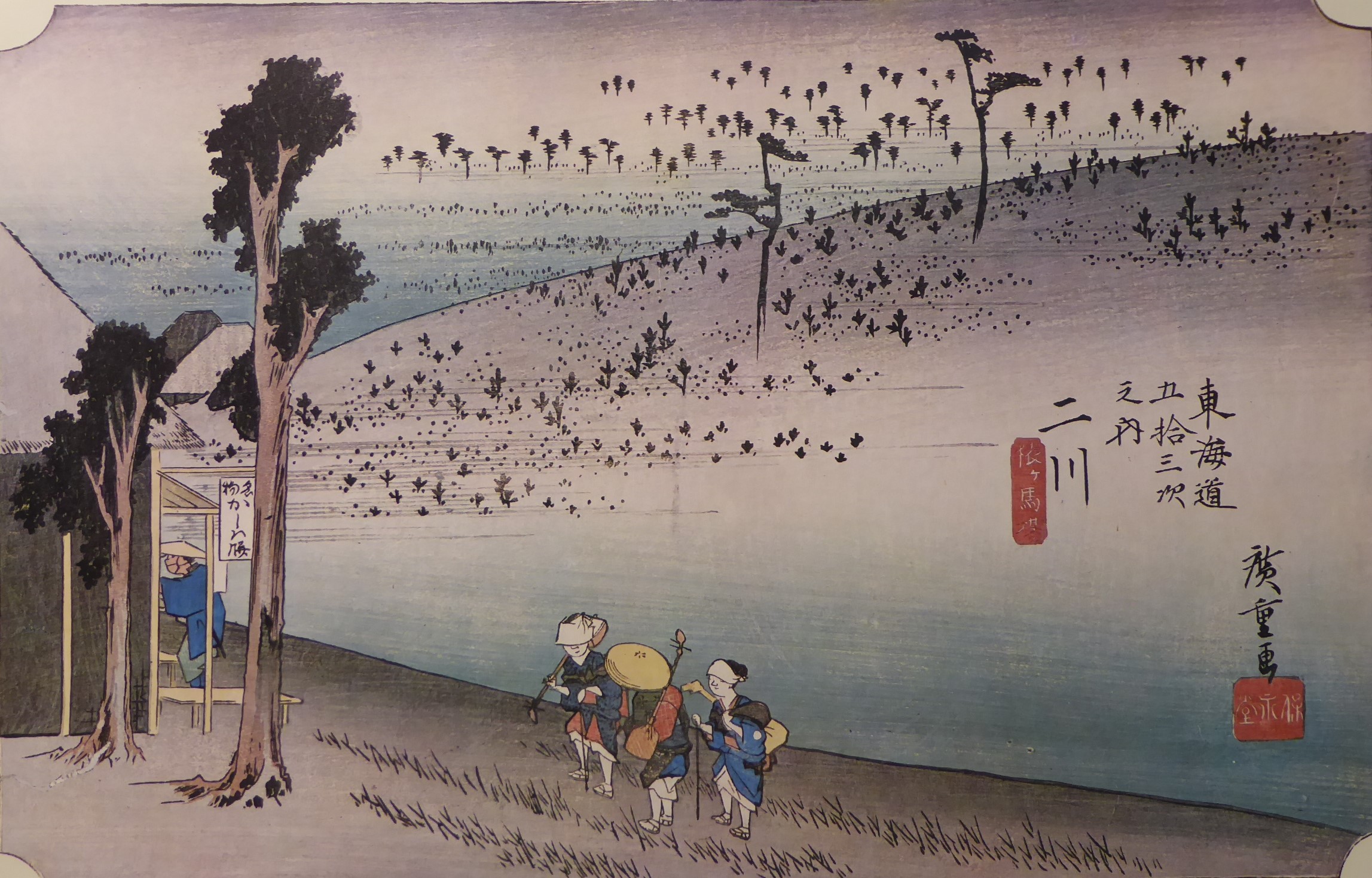Explanation of the Fifty-three Stations of the Tokaido 34 Futagawa
6.1km from Yoshida to Futagawa 34°43′26″N 137°27′00″E
Futagawa is the 33rd post station of the Fifty-three Stations of the Tokaido.
It is the easternmost post station town in Mikawa Province.
Since the Tokaido was first established in 1601, it served as a post station for two villages, Futagawa and Oiwa, Atsumi County, Mikawa Province, and was responsible for relaying horses and people.
The townscape was 12 cho (about 1.3km) long. Futagawa was 6 cho (36 ken), and Oiwa was 5 cho (40 ken).
Futagawa had one main inn, one side inn, and about 30 inns.
Oiwa was a town, not an inn, so there were no inns.
Futagawa Station on the Tokaido Main Line was established halfway between the old Futagawa and the old Kajuku Oiwa.
Part of the honjin that survived the Meiji era was renovated and restored in 1988, and a museum was established.
The area around the honjin became a historic site in Toyohashi City.
The 33 guest registers from 1807 onwards are designated as tangible folk cultural properties of Aichi Prefecture.
These are currently Futagawa-cho and Oiwa-cho, Toyohashi City, Aichi Prefecture.
① “Hoeido version”
This depicts the evening around Sarugamaba.
Sarugamaba is known as a scenic spot for Himekomatsu trees.
Countless Himekomatsu trees grow in abundance on the gentle plains that can be seen into the distance.
The sign at the tea shop reads “Speciality Kashiwa Mochi.”
The specialty of this area was kashiwa mochi.
The three women walking down the road are goze women.
Goze women are blind women.
They traveled around the country, playing the shamisen and biwa and performing “Goze songs” to make a living.
You can tell they are goze because all three of them are carrying instruments.
② “Gyousyo version”
A tea shop with a sign that reads “Specialty Kashiwa Mochi.”
The area around Saruga-Baba is a lonely place.
This shop was famous, so it became a place of rest for many travelers.
③ “Reisho version”
A tea shop with a sign that reads “Specialty Kashiwa Mochi.”
The two baskets are reminiscent of Yaji and Kita.
④ “Hokusai version”
The location cannot be identified, but a traveler on horseback is taking a break and looking at the scenery.
⑤ “Travel image”
Honjin Museum and JR Futagawa Station.
⑥ “Stamp image”
A stamp from Honjin Museum.
Hoeido version
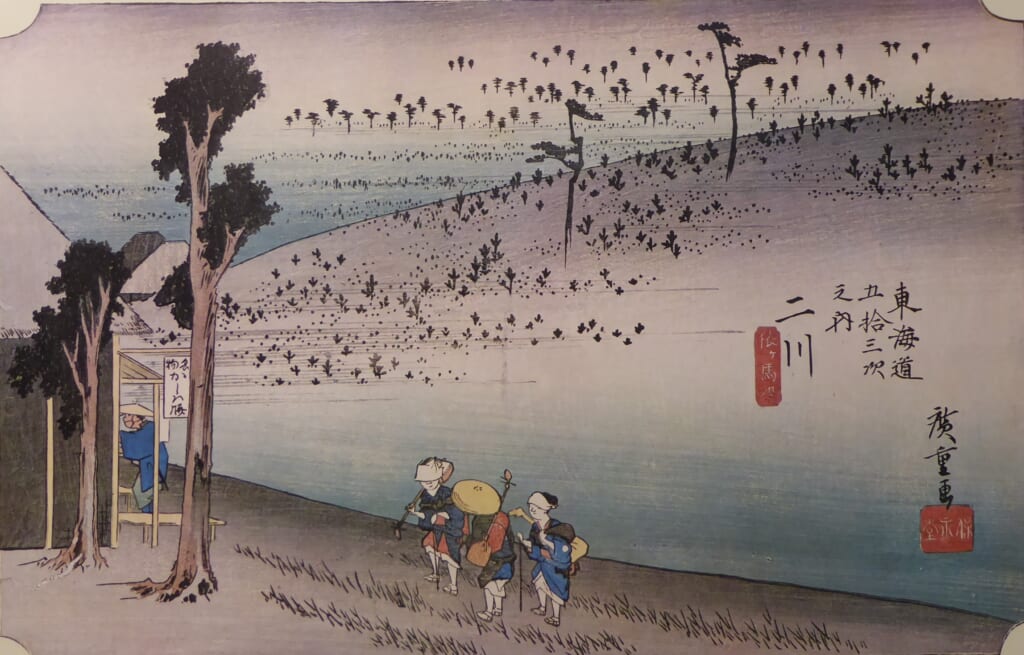
Gyousyo version
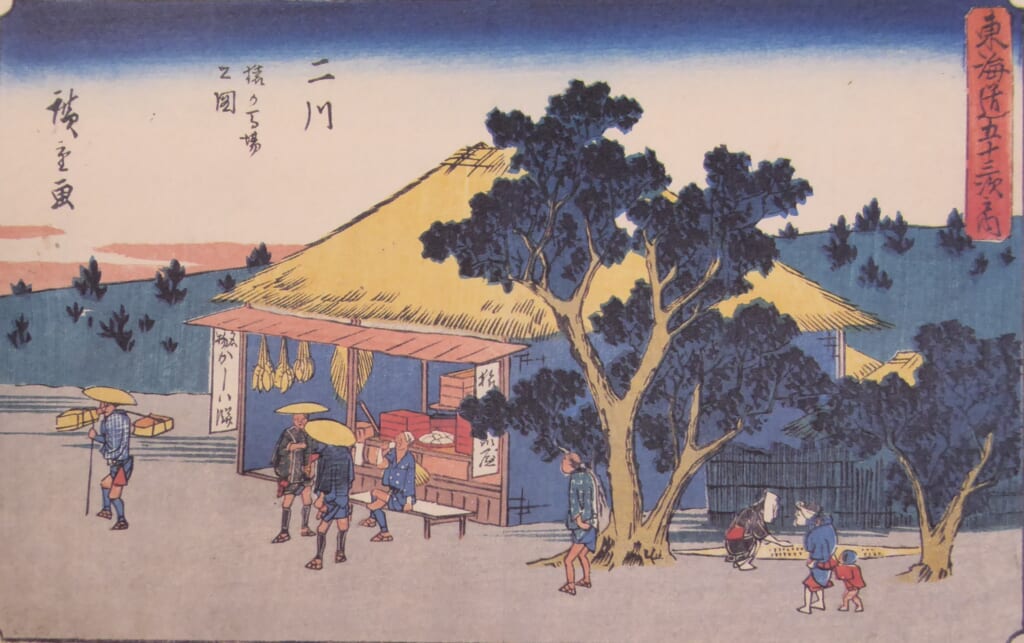
Reisho version

Hokusai version
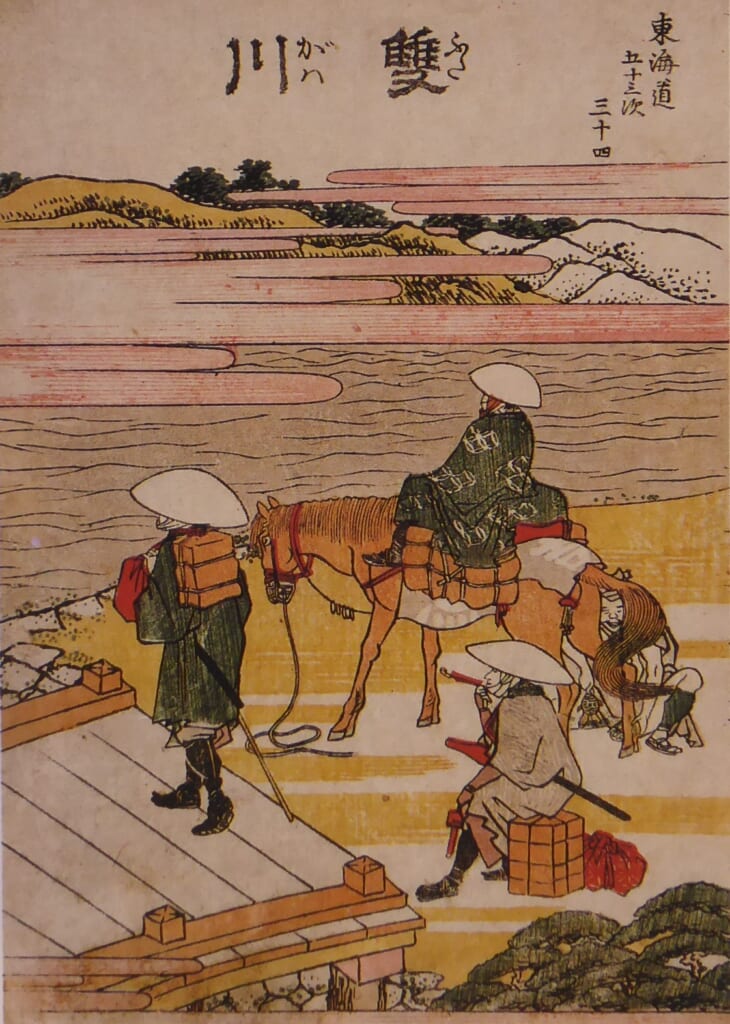
Travel image
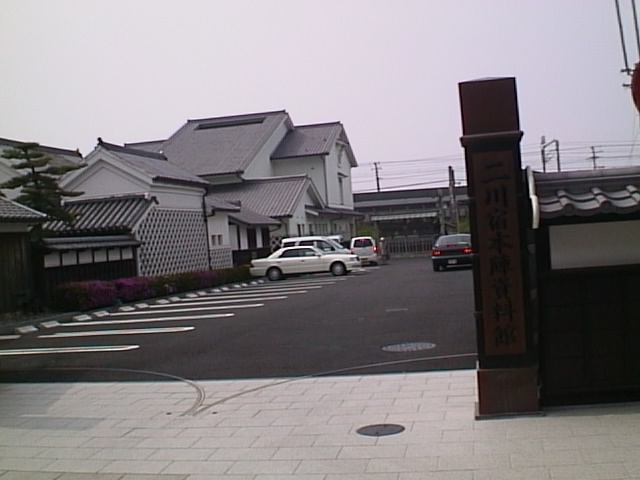
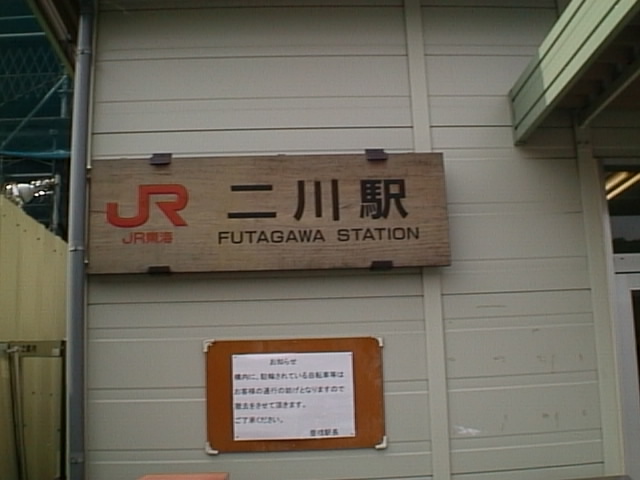
Stamp image
